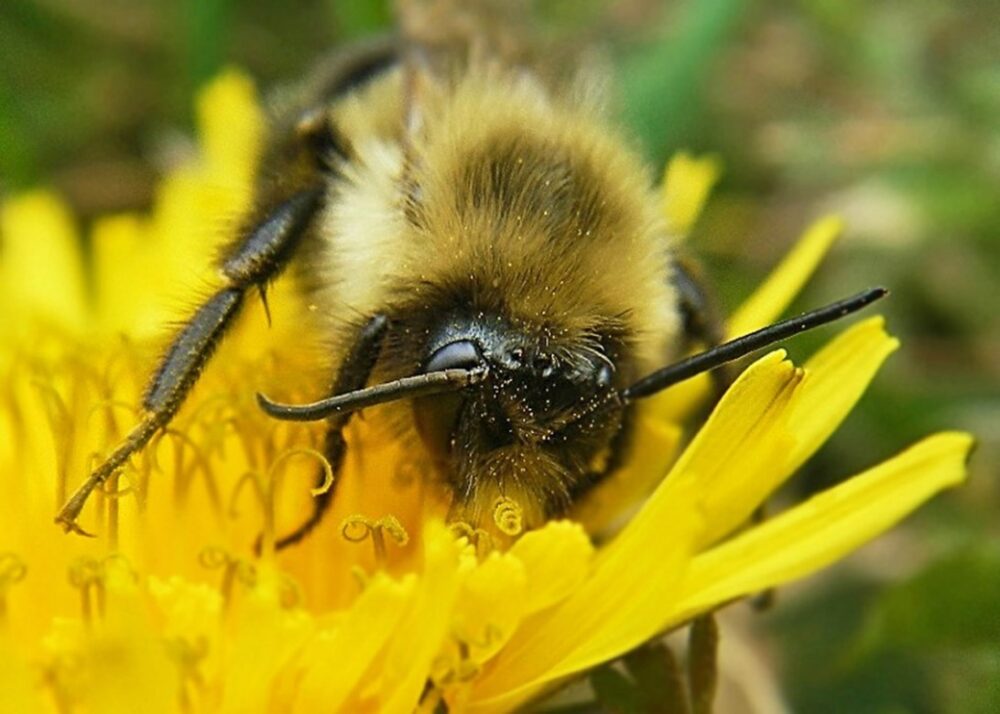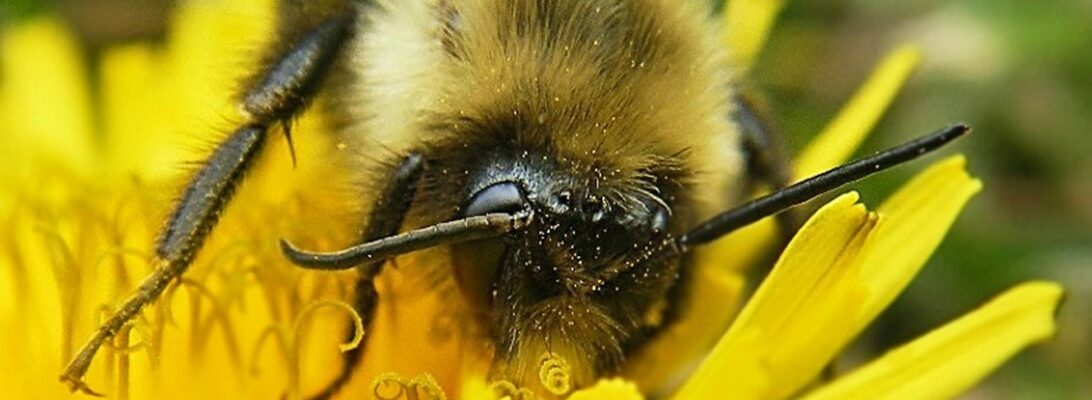Rural Perspectives: Bumblebees have no ears, 5 eyes and 2 stomachs
by Diane Constable

The common eastern bumblebee has five eyes, three of which are dark
bumps between the antennas. Photo credit Diane Constable
Of the 50 or so native species of bumblebees in North America, the eastern bumblebee (Bombus impatiens) is the most common in our area. The first part of the scientific name means “buzzing” in Latin, and the second part is the name of a favorite flower of the bee and a favorite garden flower.
Only the younger queen bee survives winter by hibernating underground after fattening up on nectar. The others, including the older queen, die off as the weather gets cold.
In spring, the queen emerges and feeds on available flowers before searching for a suitable nest site near logs, brush piles, abandoned burrows and other protected areas in or near the ground. She produces a waxy substance and forms it into containers to hold nectar and pollen.
The queen lays only female eggs, which hatch in about five days; she feeds the larvae from the pots until they are adults. These females become the worker bees of the hive while the queen continues to lay eggs. The worker bees secrete a substance, called royal jelly, which is fed the queen, and the workers take over the raising of the new eggs. Certain female eggs destined to become queens also are fed the royal jelly. If there is not enough nectar and pollen supply and not enough workers available to feed them, few if any queens are produced.
In early summer, the queen also starts producing male (drone) eggs. The adult males, which do not have a stinger, are kicked out of the nest. They live solitary lives eating nectar, defending territory, and leaving scents to attract a queen bee to mate with. Males are identified by the patch of yellow below their eyes.
Colonies can contain 50-500 bees. Unlike honeybees, the bumblebee hive does not produce an overabundance of honey and has a smaller nest.
Bumblebees do not have ears. They have five eyes, three of which are dark bumps between the antennas (these can be seen in the photo). Their wings can beat up to 240 times per second. The rotund shape of bumblebees helps them bounce off objects that they run into. They “dance” to communicate the location of favorite flowers to the other bees. They have two stomachs, one for eating and one to store nectar to take back to the hive. Pollen is stored in little “buckets” on the hind legs.
Although not aggressive, bumblebees may sting if the nest is disturbed.
Fun Fact: Bumblebees are the only bees that buzz their wings hard enough to knock pollen off the flower, which dramatically increases seed production. This makes them the super-pollinators of wildflowers, garden flowers, fruit and nut trees, and other food crops.
 As an avid photographer, Diane Constable regularly puts her formal education in both nature and photography to good use. Diane also enjoys gardening and her dogs and serves on the board of the Ann Arbor Dog Training Club.
As an avid photographer, Diane Constable regularly puts her formal education in both nature and photography to good use. Diane also enjoys gardening and her dogs and serves on the board of the Ann Arbor Dog Training Club.

